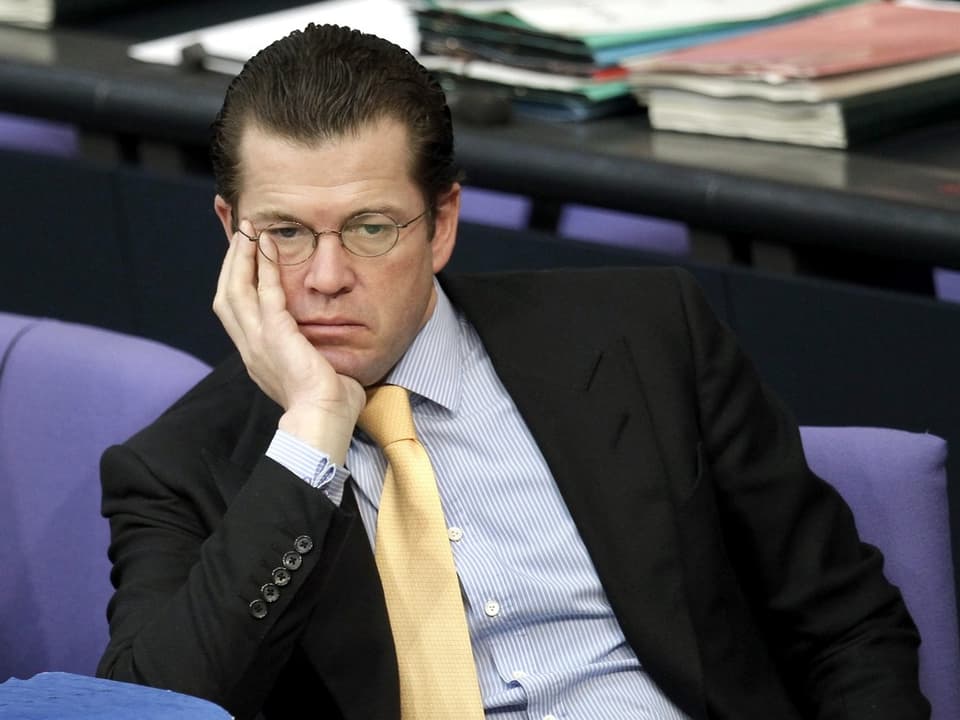Contents
Learners have access to texts via the Internet that they could easily copy. Schools are not standing idly by.
Using computers and the Internet, putting together a seminar paper or thesis from copied texts is now easier than ever before. But educational institutions do not stand idly by; in addition to common sense, they also use special software that can detect plagiarism.
This is how well plagiarism detection works
In a simple experiment, the plagiarism software “Turn it in” detects a copied paragraph from a current SRF article in just a few seconds. When searching for plagiarism, the software not only takes into account freely accessible online texts. She also has access to paid specialist literature.
Legend:
One of the most famous plagiarism cases: The former Defense Minister Karl-Theodor zu Guttenberg (CSU) had to resign from his political office in 2011 due to a plagiarism scandal in his doctoral thesis.
AP Photo/Michael Sohn
Even if you edit a copied passage of text, the software usually finds the source. The hit rate decreases the more the modified copy differs from the original, explains computational linguist Cerstin Mahlow from the ZHAW.
Modify until you get through?
Could students use plagiarism software to simply rewrite copied passages until the source is no longer recognized?
The teachers know the skills and competencies of their students.
When asked by SRF, the OST University of Applied Sciences writes that the effort is extremely high. The paraphrasing would almost be considered a personal contribution. Cerstin Mahlow also says: “If I invest a lot of time thinking about something, that’s worth something.”
It takes people
Contrary to what the name suggests, anti-plagiarism software does not detect plagiarism. The software simply creates a connection between text and source. Cerstin Mahlow explains that the software cannot check whether the quotation marks and source have been correctly cited. If plagiarism is discovered, teachers always first talk to the students.
Lecturers often notice that something is wrong, even without plagiarism software. «The teachers know the skills and competencies of their students. Atypical, technically better formulations are noticeable,” writes the Neue Kantonsschule Aarau when asked.
Tools like ChatGPT must find their way into teaching.
There are no reliable statistics on plagiarism at universities. The lecturers’ experiences suggest that in most cases plagiarism is not a deliberate circumvention of the rules, but simply negligence or excessive demands.
What about ChatGPT?
Copy-and-paste seems primitive in the age of ChatGPT. With AI it could be even easier to cheat your way through. In fact, there is no technical way to reliably recognize AI-generated texts.
Schools are aware of the problem. Instead of avoiding the new technology, students should learn to use AI as a useful aid. “In principle, the University of Bern is convinced that tools such as ChatGPT must be incorporated into teaching,” writes the university.
The use of AI is also permitted at the Lucerne University of Applied Sciences (HSLU). Where and how the tool is used must be documented. A rule that also applies to other schools.
Software also makes mistakes
At the HSLU they go one step further: the use of AI is consciously promoted because the discussion of AI and its limitations is becoming increasingly important.
And these limits exist. It happens that ChatGPT correctly inserts a quote in a text in quotation marks and with a reference to the source. But unfortunately the AI invented the quote.
